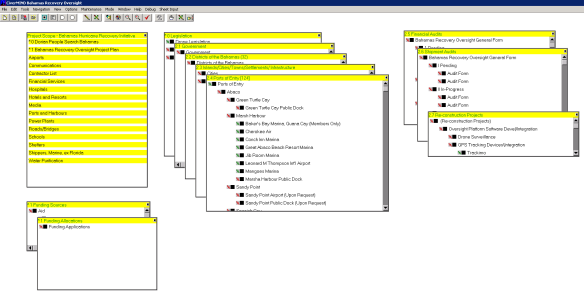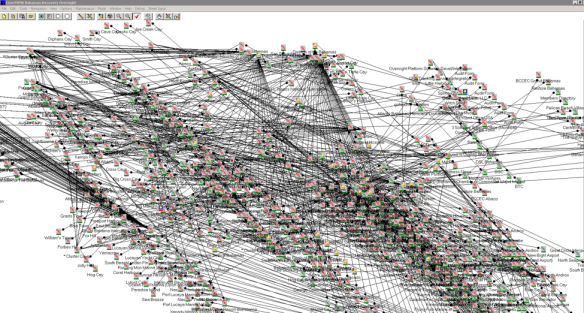Success Evolving Corporate Strategies (methods, tools, platforms)
Blog: KWKeirstead's Blog
With reference to my recent article called “Avoiding Transformation Program Fails”, here are some guidelines for an orderly process for making “good” use of corporate infrastructure/resources (i.e. putting a focus on building Competitive Advantage).
The model our group has used for over 20 years starts with an inventory of  infrastructure/ resources (Capital, Access to Capital, Land, Plant, Equipment, Tools, Premises, Staff, Current Products/Services, Products / Services Under Development, Projects Awaiting Approval, Technology Trends, Changing Legislation, Competitor actions).
infrastructure/ resources (Capital, Access to Capital, Land, Plant, Equipment, Tools, Premises, Staff, Current Products/Services, Products / Services Under Development, Projects Awaiting Approval, Technology Trends, Changing Legislation, Competitor actions).
Organizations should strive for a mix of top-down and bottom-up “candidate initiatives”. Each candidate initiative draws down on the corporate infrastructure/ resources. Few corporations have enough infrastructure/resources to take on all ‘candidate initiatives”.
Accordingly, each significant candidate initiative needs to be subjected to a threat assessment, risk/reward analysis and an ROI/SROI categorization, with a clear statement of the extent to which the initiative will contribute to building Competitive Advantage.
The final step is funding of a few initiatives from a short list of ‘promising initiatives”, with attention to having a balanced portfolio of initiatives (high risk/high return vs low risk/low return; short duration vs long duration).
From here, Case/Project Managers assume ownership of approved / funded initiatives.
Building, sustaining and augmenting Competitive Advantage requires methods, tools and a platform). You can’t expect to carry out the planning on the back of an envelope.
We recommend RBV (Resource-Based View) to all clients for “viewing” infrastructure/ resources and we recommend F.O.M.M (Figure of Merit Matrices) for non-subjective ranking of candidate initiatives.
RBV is not software, it’s a method.
RBV is exceptionally useful for strategic planning purposes when practiced at a platform that supports RBV as it lets planners “view” all the infrastructure/resources of a corporation. The core concept behind RBV is that better decisions result when strategic planners can “consider” all elements impacting a decision.
Here, below, is a “empty” template for the Bahamas Hurricane Dorian Recovery Project comprising 25 Entities, with 100-500 instances per Entity, each instance having 20-50 data elements.
Our expectation is that the number of data points for the recovery project will exceed 500,000.
 3D Free-Form Search Kbase Platform (1)
3D Free-Form Search Kbase Platform (1)
Here is what the same data looks like when it is not viewable at a platform that supports RBV.

Notes:
(1)
“3D free-form-search Kbases” do not rely on “key words”, nor do they require users to build tablesfields. Most of the data at these Kbases arrives via generic data exchangers from multiple remote data feeds.
Stay tuned for “Success achieving operational efficiency and effectiveness (methods, tools, platforms)”
Leave a Comment
You must be logged in to post a comment.








